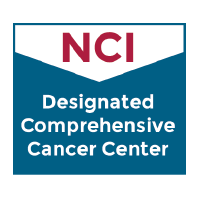
Ovarian Cancer
Ovarian cancer originates in the cells of the ovaries, including surface epithelial cells, germ cells and the sex cord-stromal cells.
Ovarian tumors include:
- Germ cell tumors. Ovarian germ cell tumors develop from cells that produce the ova or eggs. Most germ cell tumors are benign, although some are cancerous and may be life-threatening. The most common germ cell malignancies are maturing teratomas, dysgerminomas and endodermal sinus tumors. Teenagers and women in their 20s are most often diagnosed with germ cell malignancies. Before combination chemotherapy was available as a treatment, the most aggressive of these tumors – the GNP abnormal sinus tumor – was associated with a one-year disease-free survival rate of only 10 percent to 19 percent, even though 70 percent of these tumors were diagnosed very early. Today, however, 90 percent of women with ovarian germ cell malignancies can be cured and their fertility preserved.
- Stromal tumors. Ovarian stromal tumors develop from connective tissue cells that hold the ovary together and those that produce the hormones estrogen and progesterone. The most common types are granulosa-theca tumors and Sertoli-Leydig cell tumors. These tumors are fairly rare and usually are considered low-grade cancers.
- Epithelial tumors. Epithelial ovarian cancer develops from the thin layer of cells, called the epithelium, that covers the ovary. Most epithelial ovarian tumors are benign, including serous adenomas, mucinous adenomas and Brenner tumors.
Cancerous epithelial tumors are the most common and the most serious of ovarian cancers, accounting for 85 percent to 90 percent of all ovarian cancer. Some ovarian epithelial tumors don't appear clearly cancerous under the microscope and are called borderline tumors or tumors of low malignant potential (LMP tumors).
When cancer is diagnosed early while the tumor is limited to the ovary, the cure rate is better than 90 percent. Unfortunately, about two-thirds of women with ovarian cancer initially seek medical attention when the tumor is already advanced and has spread outside of the ovary. In these instances, the five-year survival rate is significantly lower.
Our approach to ovarian cancer
UCSF provides innovative, compassionate care in a supportive environment to patients with ovarian cancer. Our team includes gynecologic oncologists, gynecologic cancer surgeons, radiation oncologists and nurses with special training in reproductive cancers.
We believe that education is a powerful part of the healing process. Our team works with each patient to help her understand her condition and all her treatment options, so we can decide together on the best course of action. Your individual treatment options will depend on how far the cancer has progressed, your age and your overall health.
We also offer genetic counseling for patients who may be at higher risk for developing ovarian cancer and other types of cancer that can run in families.
Awards & recognition
-

Among the top hospitals in the nation
-

Best in Northern California for cancer care (tie)
-

One of the nation’s best in obstetrics & gynecology
-

Designated comprehensive cancer center
-

Rated high-performing hospital for ovarian cancer surgery
UCSF Health medical specialists have reviewed this information. It is for educational purposes only and is not intended to replace the advice of your doctor or other health care provider. We encourage you to discuss any questions or concerns you may have with your provider.





